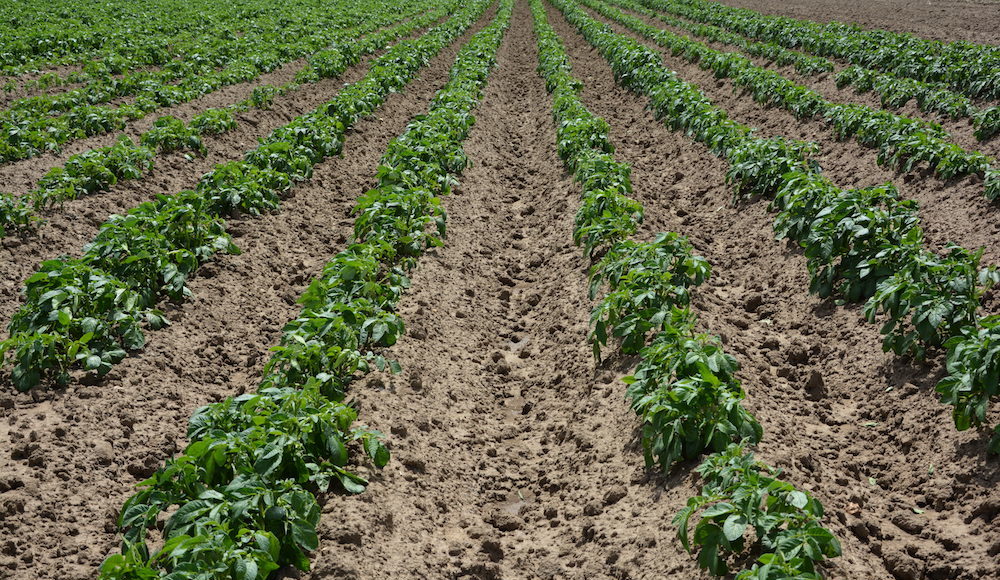[deck]Get the most accurate soil test results and learn what to do with them.[/deck]
The phrase that advises us never to compare apples to oranges should be taken very seriously in relation to soil tests according to Pat Toner, a soil management specialist with New Brunswick Department of Agriculture, Fisheries and Aquaculture (NBAFA).
“A standard test will measure water pH, buffer pH, phosphorus, potassium, calcium, magnesium and sulphur, but you need to ensure a couple of things are in place for the results to be accurate and useful,” Toner explains. “You can also have a micronutrient analysis done, but these results are harder to relate back to the crop and it’s better to do a tissue analysis for that.”
Soil organic matter can also be requested in order to track trends over time and assess the impact of manure, green manure and tillage.
Toner says farmers should be sure to ask two questions of the lab that analyzes their samples.
“You should ask if the lab participates in North American proficiency testing, a system where test results are checked between labs, using standardized check samples” he notes. “This ensures the highest level possible of accuracy. Secondly, ask what type of extractant is mixed with the sample. This is especially important to ask a new lab that you might try, because if this lab uses a different extractant than the one you’ve been using, the results really aren’t comparable without a large amount of work and many headaches.”
Toner says labs testing soils that are acidic in nature (such as those in Quebec or the Maritimes) use a Mehlich III extractant, whereas calcareous soils may be more suited to another extractant such as Bray P1.
Dr. David Burton lists a third question: are the recommendations based on the soil test results calibrated for your region? “I’m a great advocate in using regional recommendations,” says the Dalhousie University professor in the department of plant, food, and environmental sciences. “It’s really important to compare your results to field tests that have already been done in the area, but do make sure the recommendations are relatively up-to-date and apply to varieties still being grown.”
Burton notes that some large players in the potato industry continue to do trials to double-check recommendations and make the results available to their contract growers.
When, Where and How
A lot of producers test every year, notes Toner, but on sandy soil, some do it every two years and on more loamy soils, maybe every three years. Burton believes soil testing should be done every year. A depth of 15 centimetres (cm) is recommended for potatoes and other crops in rotation with potatoes.
Sampling can occur any time of the year as long as results are obtained in time to develop fertilizer and manure application recommendations. However, early fall testing “will allow for fall liming if required, but late fall after harvest will allow time to test samples and provide results to plan for the next growing season,” as explained in NBAFA publication Soil Sampling – The Key to Effective Nutrient Management Planning.
Post-harvest samples also take into account crop removal of nutrients as well as fertilizer effects on soil acidity. Choose a sampling time, then keep it consistent from year to year and preferably within the crop rotation. (See sidebar.)
Using Results
According to Toner, based on the crop and variety you specify, some labs will give you nutrient recommendations along with the your sample test results.
“Each province also has some provincial recommendations, so that influences what the lab will recommend,” he notes. “You can also use a consultant. They may not follow the lab recommendations at all and some look at things differently than others, such as base saturation, nutrient level in the soil and so on.”
Burton agrees there is a lot of assistance out there with the labs, consultants and maybe the company you’re contracted with as well.
“Remember that soil test results should be foremost examined in terms of trends,” he says. “Obviously, if your soil phosphorus level is higher every year, you’re applying too much. In my experience, input rates have tended to go up rather than down over the last few years, and in some cases this means growers are applying more nutrients than they should.”
Soil Sampling – The Key to Effective Nutrient Management Planning also recommends keeping good records and maintaining a consistent sampling plan. “The cost of analysis and sample collection is very low, on a per acre basis, when compared to other production costs,” it states. “Therefore, to get the most out of your soil testing program, keeping records and being consistent is essential in order to realize the benefits of nutrient management planning.”
In the next few years, soil testing for nitrogen (N) will become a great deal easier, if all goes well. Because there is tremendous variability in nitrogen availability from farm to farm and it’s very hard to determine how much to apply, Burton and his collaborators are developing a soil N test for potato growers.
“The current recommendations are for blanket rates based on variety and we need to measure the soil’s ability to supply nitrogen,” he says. “It’s a two-week aerobic incubation where we dry the soil, wet it, incubate it and measure the flush of N from the organic matter, which is one of the available sources of N to the crop, that and fertilizer.”
Although he’s already field-tested it in P.E.I. over the last two years, Burton is going to take another couple of years to refine it and ensure complete reliability before releasing it for public use.











